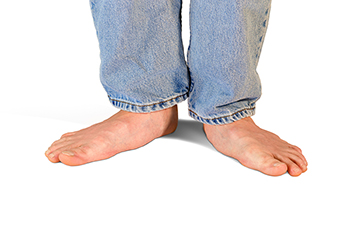
When the foot loses its structural support, its shape can alter, leading to a condition known as acquired flat feet. Acquired flat feet typically stem from an imbalance in the forces that flatten the arch and those that support it. Factors such as excessive tension in the calf muscles, obesity, dysfunction of the posterior tibial tendon, or lax ligaments can contribute to this condition. Imagine the arch as a bridge. Excessive weight or force on the bridge without adequate support underneath can lead to its collapse. With acquired flat feet, there is often too much force flattening the arch in the absence of ample structural support. Treating acquired flat feet can include performing exercises to strengthen the muscles, wearing more supportive footwear, and using orthotic shoe inserts. In some cases, surgical intervention may be needed. Post-surgery, the focus shifts to rebalancing the forces that act on the arch to optimize function and prevent further deformity. If you have been affected by acquired flat feet, it is suggested that you schedule an appointment with a podiatrist for who can conduct a full examination before determining what the proper treatment is for you.
Flatfoot is a condition many people suffer from. If you have flat feet, contact Dr. Steven Sheridan from Ankle & Foot Specialty Clinics. Our doctor will treat your foot and ankle needs.
What Are Flat Feet?
Flatfoot is a condition in which the arch of the foot is depressed and the sole of the foot is almost completely in contact with the ground. About 20-30% of the population generally has flat feet because their arches never formed during growth.
Conditions & Problems:
Having flat feet makes it difficult to run or walk because of the stress placed on the ankles.
Alignment – The general alignment of your legs can be disrupted, because the ankles move inward which can cause major discomfort.
Knees – If you have complications with your knees, flat feet can be a contributor to arthritis in that area.
Symptoms
- Pain around the heel or arch area
- Trouble standing on the tip toe
- Swelling around the inside of the ankle
- Flat look to one or both feet
- Having your shoes feel uneven when worn
Treatment
If you are experiencing pain and stress on the foot you may weaken the posterior tibial tendon, which runs around the inside of the ankle.
If you have any questions please feel free to contact our office located in Sandusky, MI . We offer the newest diagnostic and treatment technologies for all your foot and ankle needs.
